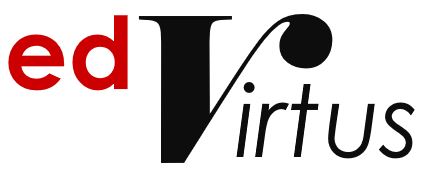
RF Radiation Safety Officer (RFRSO) – Level 1
Presenter: Dr Mike Ryan
Click Register to view available course delivery modes (virtual/face-to-face), dates, and locations.
The registration page allows you to register individually or to register groups of up to 15.
Pre-requisite: Completion of a two-day RFRSO Level 2 course.
Duration: 3 Days | Price: $3,960
Course Aim
The aim of this Level 1 Radio Frequency Radiation Safety Officer (RFRSO) course is to provide a quantitative level of understanding of the principles of RF radiation safety practice to meet the needs of Australian/International standards for a RF radiation safety officer or Defence Level 1 RF Radiation Safety Officer (RFRSO1).
The first two days of this qualification is attained through attendance at our Level 2 RFRSO (RFRSO2) Course which covers an introduction to the electromagnetic spectrum, RF propagation, and antennas; the health effects of RF and RF radiation safety; an introduction to the ARPANSA RF exposure standard; an introduction to RF measurement and computation and RF survey; and coverage of RF safety policies, procedures and plans.
This three-day course then builds on Level 2 competencies and knowledge with a detailed coverage of RF calculations and the application of the ARPANSA exposure standard to continuous wave and pulsed RF sources, RF radiation test and measurement, computation and uncertainty in accordance with the measurement standard AS/NZS2772.2-2016; and an extensive practicum involving a number of RF radiation survey exercises (attendees are encouraged to bring their own measuring probes/equipment).
The RFRSO Level 1 will achieve the following competencies (in addition to Level 2): make hazard measurements; complete safety calculations (occupational/non occupational limits); develop high-level documentation (such as produce or interpret radiation safety cases and document a radiation survey); and perform an incident investigation or conformance inspection.
Course Outline
Day 1
Non-ionising Source Compliance Assessment: Systematic procedure to follow | Sources: CW, time-varying, environment effects | Revision of theory: antenna properties, field regions, far field approximation for calculations | Variation of fields in near field region | Peak vs average power density | Energy density, exposure time and average power density | Preliminary assessments | Effects of scanned systems | Example: single high power HF CW source | Example: multiple CW sources | Practice calculating field regions, estimate S/E/H values vs distance, estimate GP and occupational boundaries
RF Radiation Hazard Calculations: Practice calculating field regions, estimate S/E/H values vs distance, estimate GP and occupational boundaries | Example: CW broadcast transmitter | Example: CW Navigation Aid | Example: CW radar | Example: scanning pulsed radar | Example: multi-frequency exposure
Measurements and Uncertainty: Measuring equipment: broadband, narrowband | Handheld probe (fields) | Induced current (limb current) meter | Peak power meter & spectrum analyser (low duty cycle, fields) | Equipment limitations: survey implications | Measurement uncertainty concepts, allowance | Implement using uncertainty budget spread sheet tool | Verification, calibration | Effective reporting
Level 1 Formative Test: Online multiple-choice test to provide attendees with the opportunity to review the course material from the day. Completion of the test is mandatory.
Day 2
RF Survey Methods: Review: aims, requirements, expectations, outcomes | Operational considerations: access, mode of operation, scheduled maintenance, etc | Establish source characteristics and applicable reference levels (E, H, S, induced current) | Preliminary assessments: benchmarks | Frequency and field region considerations | Instrumentation: match specs & performance, (frequency & time responses, polarisation match, amplitude match), identify alternative options | Survey techniques: unperturbed field values, spatial averaging, temporal averaging | Structured survey proforma and documentation | Scenario: HF CW vertical monopole in a field | Scenario: VHF whips on a crewed vehicle | Scenario: ship with various HF, UHF & radar sources
Verification: Requirements: frequency, accuracy, outcomes | TEM cells: design and operation | Home-brew: source, antenna, calculations | Verification outcomes: accuracy and isotropicity
Managing Uncertainties: Uncertainty budget proformas | Establish influence quantity values | Implications for Survey: Expanded Uncertainty compared to Uncertainty Allowance
CW Source Survey: Do measurements | Compare with benchmarks | Update uncertainty budget | Establish survey outcome | Draft report outline
Pulsed Source Survey: Do measurements | Compare with benchmarks | Update uncertainty budget | Establish survey outcome | Draft report outline
Day 3
Review of CW and Pulsed Surveys: Measurements and Uncertainties | Survey Outcomes: boundary location and recommendations | Reflections: improvements to surveys
Survey of Multiple-source, Multiple-frequency Site: Source specs and environment considerations | Identify applicable limits | Preliminary estimations | Uncertainty budget preparation | Equipment selection and verification | Do measurements | Compare with benchmarks | Update uncertainty budget | Establish survey outcome | Draft report outline
Reporting: Survey outcomes: boundary location and confidence of this assessment | Recommendations (barriers, signage, access restrictions, resurvey date) | Reporting audience requirements (high level executive vs detailed and verifiable documentation suitable for Level 1 RFRSO)
Level 1 Final Test: Online multiple-choice test— Level 1 certificate awarded on successful completion of the Day 1 Test; participation in the activities of the practicum; and a pass of >60% for the Day 3 Test.
Course Material
The following resources will be provided to attendees of this course:
A PDF copy of the PowerPoint presentations used for the course.
PDF copies of exercises and examples.
A certificate of completion (subject to passing the course evaluations).
